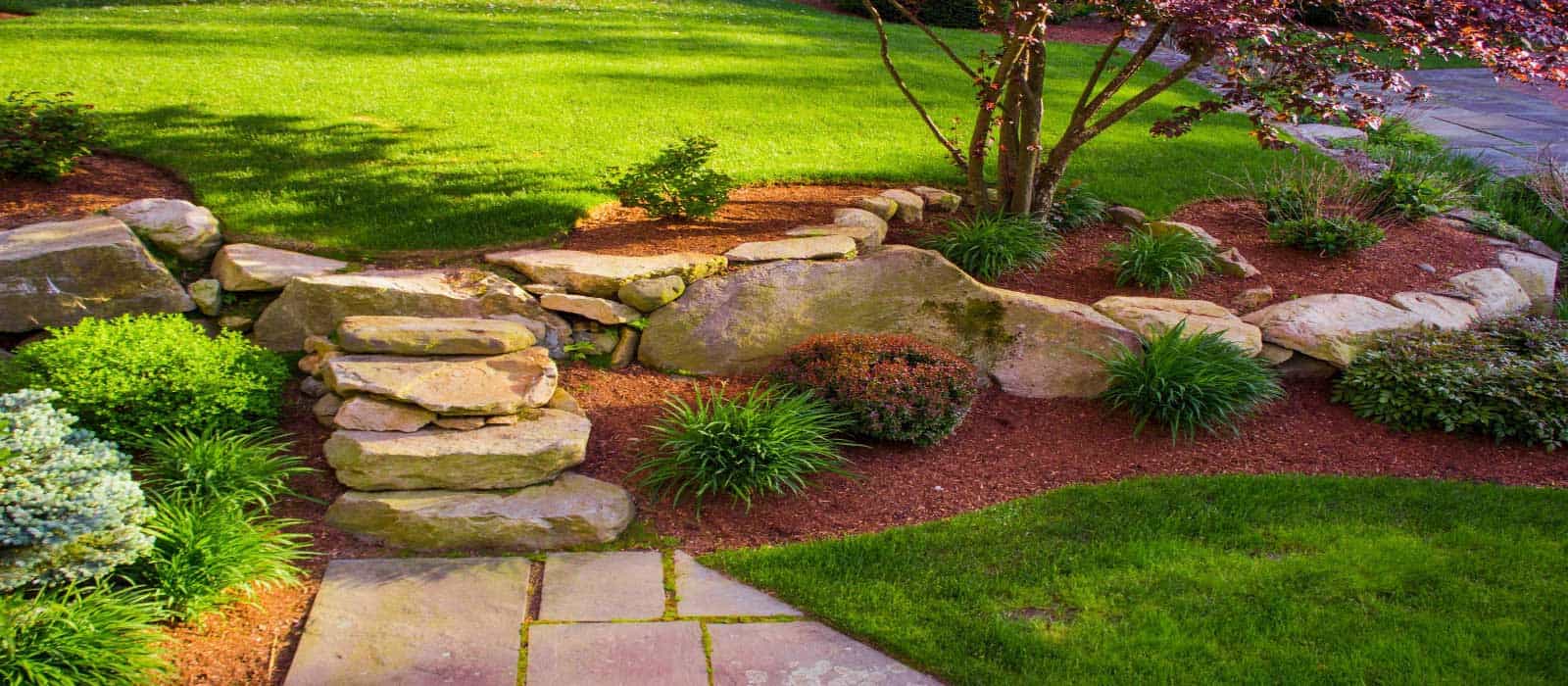Creating a beautiful garden path is like painting a masterpiece in your backyard. It adds charm and character and provides a functional route through your garden. Whether you're a gardening enthusiast, a DIY homeowner, or a professional landscaper, understanding how to build garden paths using stepping stones and pavers can elevate your outdoor space. In this guide, we'll walk you through everything you need to know, from materials to maintenance, ensuring your garden pathways are attractive and enduring.
Why Garden Paths Matter
Garden paths are the backbone of your landscape, guiding visitors and protecting your plants. They connect different areas, offer a sense of direction, and can even create separate zones for various activities, like relaxation or dining. Beyond their functionality, well-designed paths add visual appeal and elevate the overall garden aesthetics. For gardening enthusiasts and DIY homeowners, creating your path is a rewarding project that showcases your creativity.
Exploring Materials for Garden Paths
When it comes to building garden paths, the choice of materials can significantly influence the appearance and durability of your pathway. Stepping stone pavers are famous for their versatility and style. They can be made from various materials, such as sandstone, concrete, and natural stone. Sandstone stepping stones offer a rustic charm, while concrete options provide durability and a range of colours. Natural stone steppers bring an organic feel and blend seamlessly with the garden's natural elements.
In addition to stepping stones and pavers, gravel and pebbles are often used to fill the gaps between rocks, adding texture and preventing weeds. These elements not only enhance the path's appearance but also improve drainage. Combining these materials allows you to create unique designs that complement your garden's theme.
Planning Your Garden Path
Careful planning is essential before you start building. Begin by deciding the path's location and purpose. Consider how it will connect different areas of your garden and how you want it to look. Once you've chosen the path's route, measure the space to determine the materials needed. Sketch out your design, considering the proportions, curves, and existing garden features.
Planning also involves choosing suitable stepping stones and pavers based on the path's intended use. For high-traffic areas, opt for durable materials like concrete stepping stones. Sandstone steppers are great for decorative paths with less foot traffic. Ensuring your plan accommodates your garden's unique characteristics will produce a more cohesive and satisfying result.
Designing the Perfect Path
Designing your garden path is where creativity comes into play. Decide on the width of your path, ensuring it's wide enough for comfortable walking. Consider adding curves to create a more natural flow miming nature's unpredictability. Play with patterns using different shapes and sizes of stepping stones and pavers. This adds visual interest and can guide the eye through the garden.
A stepping stone path with gravel between each stone can create an appealing contrast and enhance the path's texture. Experiment with various layouts, such as a straight path with evenly spaced stones or a meandering path with irregularly placed stones. Remember, the goal is to create a path that complements the garden's overall design while serving its functional purpose.
Gathering Tools and Equipment
Gather the necessary tools and equipment to bring your garden path project to life. You'll need a shovel, rake, measuring tape, level, and rubber mallet to position the stones. A wheelbarrow will help transport materials, while a garden hose can assist in defining the path's shape before construction begins. Safety gear, such as gloves and protective eyewear, is also a good idea to keep yourself safe during the project.
To lay the stepping stones and pavers, you'll need a mix of sand and screenings to create a stable base. A landscape fabric can prevent weed growth and help maintain a clean appearance. Having all these tools on hand ensures a smooth construction process and allows you to focus on the creative aspects of your garden path.
Laying Out Steppers and Pavers
Now that your tools are ready, it's time to lay out the stepping stones and pavers. Begin by marking the path's outline using stakes, string, or a garden hose. Dig a shallow trench along the marked path, ensuring it's deep enough to accommodate the stones while allowing the top to sit slightly above the ground level. This helps with drainage and prevents water pooling.
Fill the trench with sand, leveling it with a rake. Place the stepping stones and pavers on the sand, adjusting their position with the rubber mallet to ensure stability. Leave approximately 2 to 3 inches of space between each stone for a natural look. Once the stones are in place, fill the gaps with gravel or pebbles, enhancing the path's texture while preventing weed growth.
Creating Beautiful and Functional Paths
Your garden path is more than just a walkway; it's a canvas for creativity. Consider incorporating decorative elements such as plants, lighting, or garden sculptures along the path's edges to make it visually appealing. Low-growing plants, like groundcovers, can soften the path's lines and create a seamless transition between the stones and the surrounding garden.
Functionality is equally important. Ensure the path is user-friendly by maintaining a smooth surface without uneven stones. If the path leads to specific garden features, like a seating area or a water feature, ensure it's wide enough to accommodate foot traffic comfortably. By focusing on both aesthetics and functionality, you'll create a garden path that enhances your outdoor space.
Maintenance for Longevity
Maintaining your garden path ensures it remains in top condition for years. Regularly check for any loose or uneven stones and reposition them as needed. Clear debris and fallen leaves from the path to prevent staining and weed growth. Occasionally refill the gaps between rocks with gravel to maintain a clean appearance.
If your path is exposed to harsh weather, consider sealing the stones to protect them from moisture and weathering. This extra step can significantly extend the lifespan of your path. With proper maintenance, your garden path will continue to provide a beautiful and functional route through your garden.
Real-Life Inspirations
Look to successful garden path projects that showcase creativity and functionality for inspiration. One example is a homeowner who used sandstone steppers to create a winding path through a lush garden, enhancing its natural charm. Another project involved a mix of concrete stepping stones and pebbles, offering a modern touch to a minimalist garden design.
These real-life examples demonstrate the endless possibilities of garden path design. By exploring different materials, layouts, and decorative elements, you can create a unique path that reflects your style and enhances your garden's beauty.
Exploring Your Options
With the knowledge and tools at your disposal, you're ready to transform your garden with beautiful stepping-stone paths. Whether you're building a new path or renovating an existing one, the possibilities are endless. Remember, your garden path is an opportunity to express your creativity and enhance the landscape.
If you need high-quality materials, such as stone steppers, pebbles, and pavers, visit Manna Gum. Our extensive supplies will help you bring your garden vision to life. Explore our website or contact us directly on (03) 9752 2434 for assistance with your path-building project.
Making Your Mark
Garden paths are more than functional walkways; they are an integral part of your outdoor oasis. Following the steps outlined in this guide, you can create a path that enhances your garden's aesthetics and adds value to your home. Whether you're a gardening enthusiast or a professional landscaper, the satisfaction of crafting a beautiful garden path is unparalleled.
Now it's time to get started on your path-building adventure. Begin planning, gathering materials, and transforming your garden into a picturesque paradise. For more inspiration and assistance, consider contacting the experts at Manna Gum. We can provide the tools and guidance to make your garden path dreams a reality.



